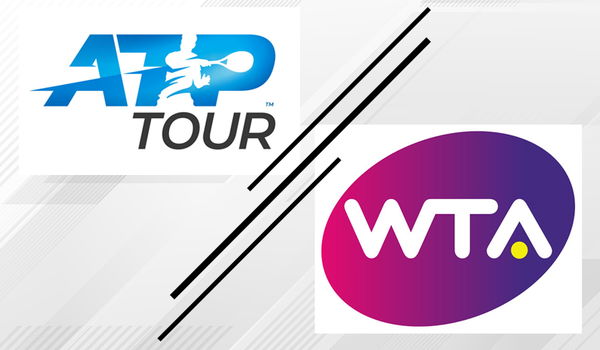

Tennis, a realm of triumphs and heartbreaks on the grand stage, holds a lesser-known truth beneath its glamor. Amid the cheers and tears, there’s an unexpected substantial consolation for those who exit the Grand Slams like Wimbledon or the US Open in the first round itself.
A recent tweet from sports journalist Christopher Clarey from the New York Times has brought to light the surprising figures behind this phenomenon, revealing the financial assurance that comes with an early defeat at the majors.
ADVERTISEMENT
Article continues below this ad
Money earned by players who exit early in Grand Slams
The tweet shared the money awarded for an opening-round loss in 2023, considering today’s currency exchange rates:
– Australian Open: $69,510
– Roland Garros: $75,589
– Wimbledon: $70,100
– US Open: $81,500
This unique practice isn’t an encouragement for losing; it’s a fair acknowledgment of the skill and effort needed to secure a place in these prestigious tournaments. As the sports journalist aptly phrased it, “It’s not more money for losers but fair reward for those good enough to get into a major”
Prize money for losing R1 at the majors in 2023
(Today's exchange rates)Aussie Open: $69,510
Roland Garros: $75,589
Wimbledon: $70,100
US Open: $81,500Good to see this keep going up. It's not more money for losers but fair reward for those good enough to get into a major pic.twitter.com/RZcDkDELv6
— Christopher Clarey 🇺🇸 🇫🇷 🇪🇸 (@christophclarey) August 8, 2023
Within the complex world of Grand Slam events, a surprising 112 players face early elimination within the initial week. For the top-notch tennis players, the goal is to make it to the coveted second week. Yet, for those who don’t make the cut, there’s a silver lining in the form of rest, practice sessions with coaches, physical training, and mental rejuvenation. This luxury, however, is mostly reserved for the cream of the crop.
Grand slam players after early losses, What do they do after?
After a premature exit, players waste no time getting back on the court to collect prize money and ranking points, fueling their dreams of tennis success.
ADVERTISEMENT
Article continues below this ad
But, there’s a twist. The Grand Slam schedule rarely aligns with ATP Tour events, leaving those eliminated in the early rounds with only one path back to the competition: participating in Challenger-level or Masters 250, 500, and 1000 events. The Challenger circuit, positioned just below the main Tour, welcomes a mix of emerging talents, seasoned pros, and regular ATP contenders striving to regain their form.
The prize money in the Challenger circuit is notably less compared to Grand Slam rewards. For reference, Carlos Alcaraz won nearly $3 Million in Prize money for winning Wimbledon, whereas winners of Challenger 125 series tournaments typically earn around $150,000.
ADVERTISEMENT
Article continues below this ad
Participating in tournaments after being knocked out early in a Grand Slam might seem straightforward, but it actually follows a careful set of tennis etiquette. An informal rule says that players can’t enter another tournament until the one they just finished ends. This rule applies all year except during the eight weeks of Grand Slam matches and the big Masters 1000 events in Indian Wells and Miami. These special tournaments last for two weeks each and attract the most players after the Grand Slams.
WATCH THIS STORY | ?What A Class Act? ? Serena Williams Sends Love As Roger Federer Hangs His Tennis Racket
ADVERTISEMENT
ADVERTISEMENT
ADVERTISEMENT
ADVERTISEMENT


